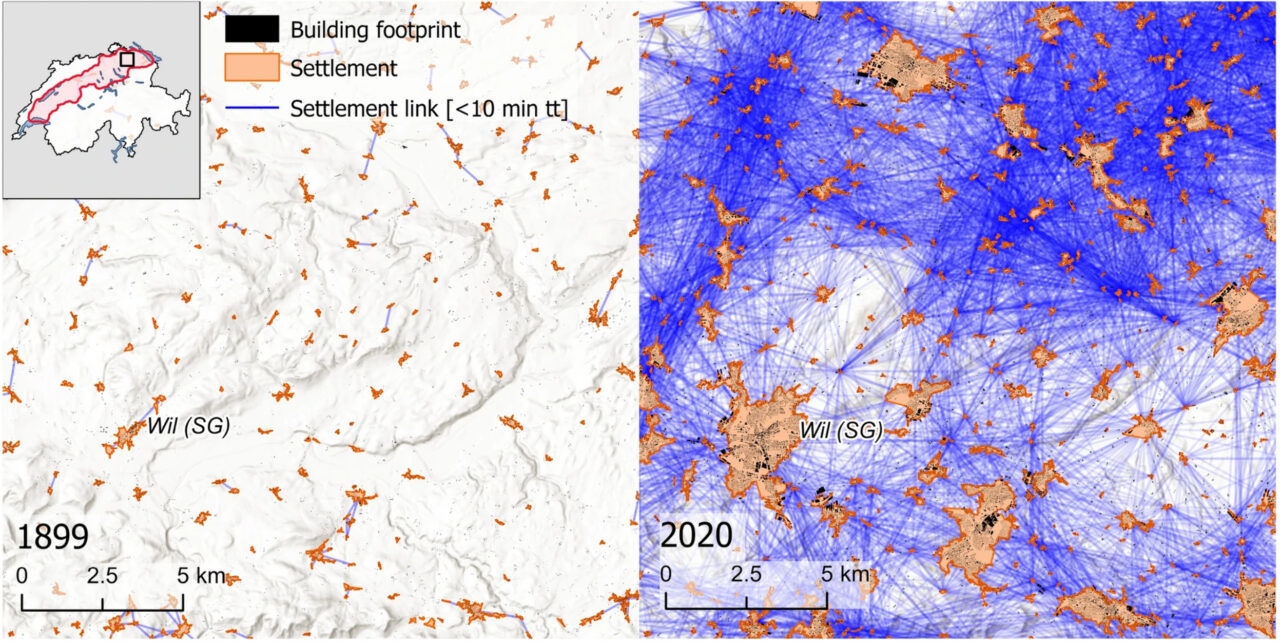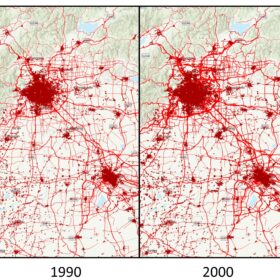
Yves M. Räth, Adrienne Grêt-Regamey, Chenjing Jiao, Sidi Wu, Maarten J. van Strien
2023
Full text
Homogeneous settlement morphologies negatively impact urban vibrancy, the environment, and emotions. Mainly resulting from the separation of functions such as work and living, homogeneous settlements have often been found around large cities.
However, it remains unknown whether this phenomenon occurs in settlements of any size and persisted over time. In this study, we investigated the relationship between the internal structures of settlements and their location within a settlement network at a large spatial scale and a fine resolution, over seven time steps covering 120 years of settlement development. Using building footprints and road geometries from historical maps of the Swiss Plateau in combination with historical travel speeds, we analyzed networks at both the local- (building networks) and the regional-scale (settlement networks). Our findings show that particularly small settlements located near larger settlements exhibit a high degree of morphological homogeneity, and that this pattern persisted since the early twentieth century despite strong changes in mobility. These results suggest that the position of a settlement within a settlement network can have an impact on its morphological homogeneity, which in turn can have consequences for the functionality and livability of the settlement and provides useful insight to the development of settlements.
